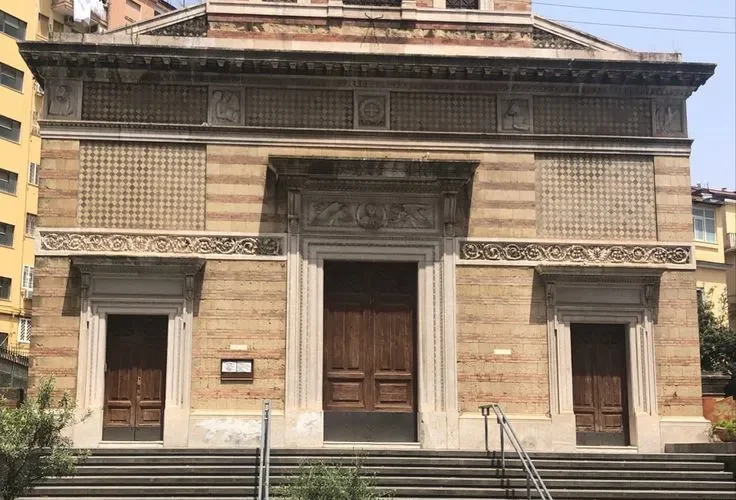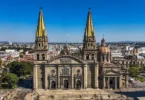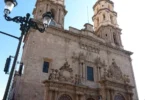Introduction
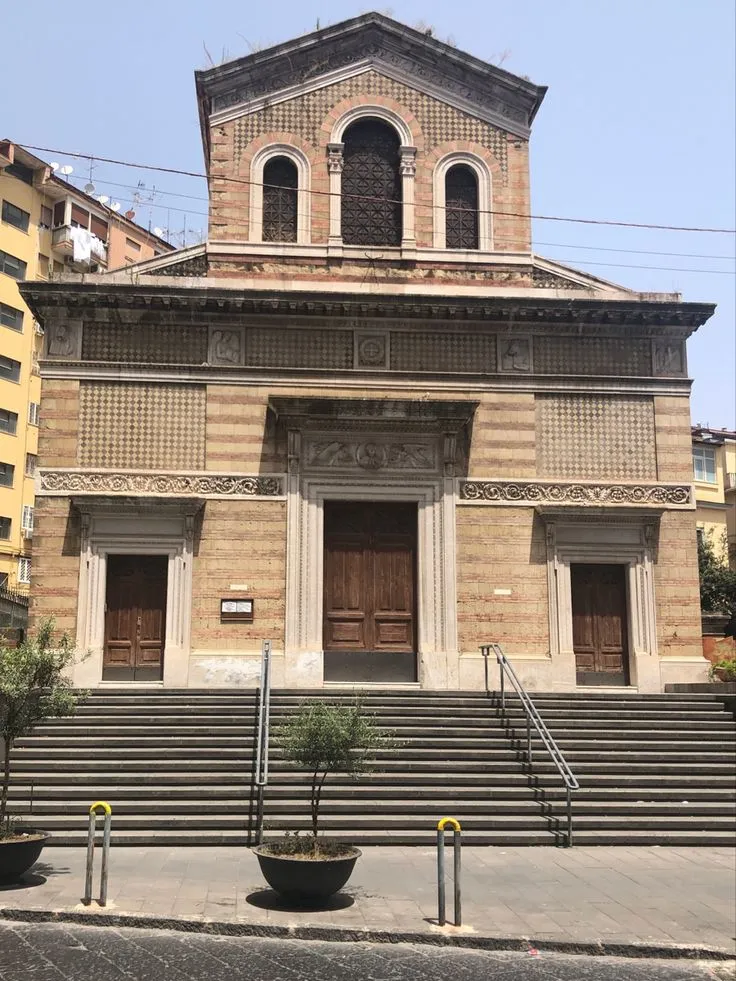
The Minor Papal Basilica of San Gennaro ad Antignano is a prominent church located in the heart of Naples, Italy, specifically in the Vomero district within the V Municipality of Arenella-Vomero, at Via San Gennaro ad Antignano nº 82. This grand basilica stands as one of the monumental churches in Naples, known for its architectural beauty and historical significance. The construction of the basilica began on December 27, 1904, and was completed over several decades, with the final structure being finished in 1968. The church was designated a minor basilica by Pope Pius X on March 17, 1905, recognizing its importance in the region and its dedication to Saint Gennaro (San Gennaro), the patron saint of Naples. In 1912, the basilica was further honored with the title of “pontifical” church, emphasizing its significance in the Catholic hierarchy.
In 1956, it was officially established as a parish by Cardinal Marcello Mimmi, the Archbishop of Naples, further solidifying its role in serving the spiritual needs of the local community. The basilica is now part of the parish of San Giovanni Battista dei Fiorentini and is located within the 5th Deanery of the Archdiocese of Naples. The Basilica of San Gennaro ad Antignano continues to serve both as a place of worship and as an important cultural and architectural landmark in the city of Naples.
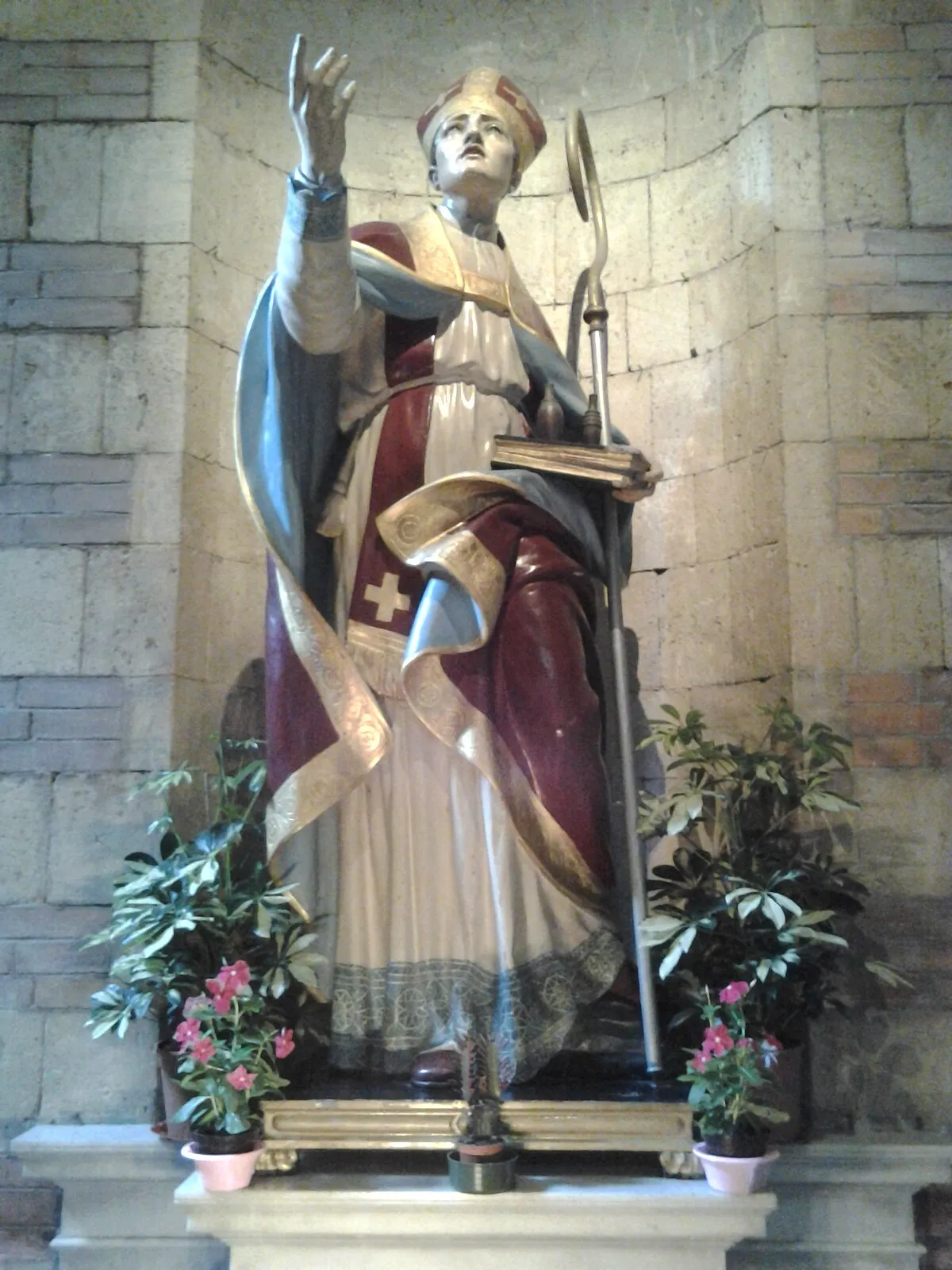
The Basilica of San Gennaro ad Antignano stands on a site with deep historical significance. It is located near the spot where, in the year 315 AD, the miracle of the liquefaction of the blood of Saint Gennaro (San Gennaro) occurred for the first time. This miracle is one of the most revered religious phenomena in Naples, with the blood of the saint miraculously turning to liquid several times a year. The place takes its popular name, “abbasci’ê ccappelle” (meaning “down to the chapels” in Neapolitan dialect), from two chapels that were once located here, one dedicated to San Gennaro and the other to San Pietro. These chapels were demolished in 1897, after an unsuccessful attempt by Ferdinand II of Bourbon to build a basilica modeled on the San Francesco di Paola Basilica designed by Francesco Cappelli and Giuliano Taglialatela.
Early Religious Significance and the Middle Ages
The origins of the religious building on this site trace back to the Middle Ages, though the exact date of its founding remains unknown. In the 17th century, notable historians Camillo Tutini and Carlo Celano reported the presence of a small altar featuring a marble head of Saint Gennaro, which was believed to have been erected long before their time. The site was already a destination for grand processions attended by numerous faithful.
Development in the 18th Century
In 1707, the Duchess of Diano, Brigida Spinola, widow of Marcello Calà, Marquis of Ramonte, and her son Filippo Ossorio olim Calà, Marquis of Villanova, commissioned the construction of a small chapel to enclose the marble head of Saint Gennaro. The chapel was designed with a vault and displayed the head of the saint on its façade. This piece, crafted in the 16th century, was later incorporated into a monument made of piperno stone, located near Via Conte della Cerra. Inside the chapel, a commemorative plaque was placed to mark its founding.
Ownership and Sale to Ferdinand II
Towards the end of the 18th century, the chapel dedicated to San Gennaro became the property of the Vacchiano family, who may have been responsible for renaming it the Vacchiano chapel. Eventually, the chapel was sold to King Ferdinand II of Bourbon in 1857, who envisioned constructing a basilica on the site. However, his plans to build a basilica, modeled after the San Francesco di Paola Basilica, were never realized due to the fall of the Bourbon dynasty. In 1897, the chapel and its surrounding structures were demolished, although it had been declared a national monument by Vittorio Emanuele II in 1861.
The Efforts of Monsignor Gennaro Sperindeo
In 1902, Monsignor Gennaro Sperindeo (1870-1954) proposed the construction of a new church on the site, motivated by local outrage over the demolition of the old chapel and the approaching 16th centenary of Saint Gennaro’s martyrdom. Sperindeo led a fundraising campaign to gather alms for the project. Initially, the land for the new basilica was identified as the site directly across from the demolished chapel. However, this land faced the north and would have resulted in a poorly lit façade. The decision was made to exchange the land, opting for the area facing south, which provided better lighting for the future basilica. Construction of the basilica began on December 27, 1904.
Completion and Inauguration
The basilica was inaugurated on September 10, 1905, but only the crypt was open for worship at that time. Due to financial difficulties, construction proceeded at a slow pace. The entire basilica was opened to the public on September 19, 1932, although significant work remained unfinished, including the façade’s cladding.After decades of work, the Basilica of San Gennaro ad Antignano was finally completed in 1968.
The Shrine Near Via della Cerra
Near the basilica, at the start of Via della Cerra, there is a shrine built in 1941. This shrine houses a marble effigy of Saint Gennaro’s head, originally taken from the Vacchiano chapel. This effigy, created in the 18th century, commemorates the legendary event of the first miraculous liquefaction of the saint’s blood. According to local tradition, this miracle occurred when the martyr’s bones were carried along the road during the reign of Emperor Constantine. The shrine stands as a testament to the continued reverence for Saint Gennaro in Naples and the long history of devotion to the saint in this region.
Architecture of the Basilica of San Gennaro ad Antignano, Naples, Italy
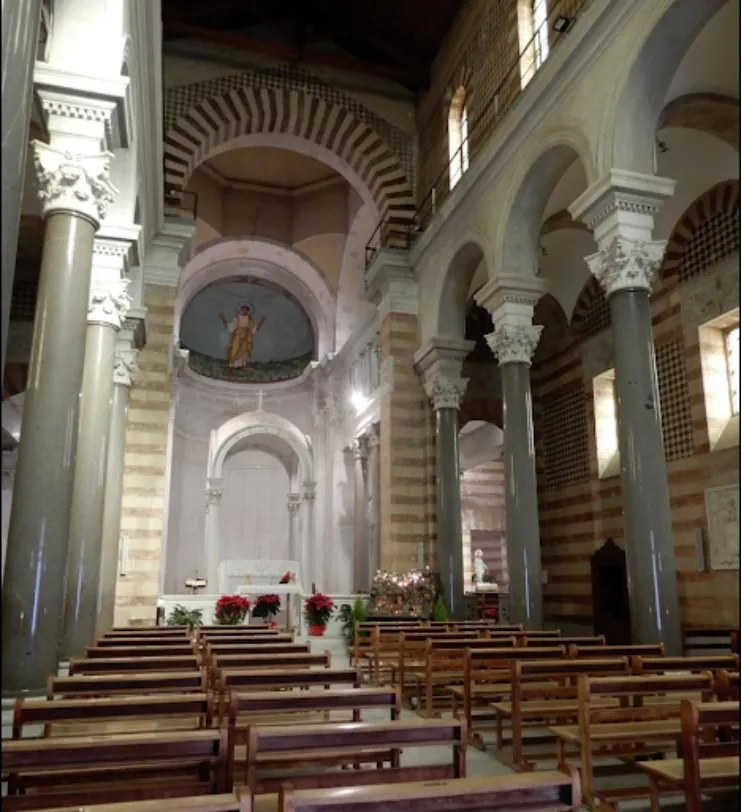
Architectural Styles: Romanesque architecture.
The design of the Basilica of San Gennaro ad Antignano began in 1902 under the direction of Engineer Giuseppe Pisanti (1826–1913), with collaboration from Engineer Silvio Castrucci (1854–1919), who also served as the project’s Director of Works. Upon their deaths, Engineer Gaetano Cappa replaced Castrucci and continued the construction, including the completion of the basilica’s roofing in 1932. The basilica’s architecture follows a Latin cross plan, consisting of three naves, each ending in semicircular apses. The central apse is more prominent than the two lateral ones, and the nave is divided by 12 grey granite columns with Corinthian capitals made of white marble. The basilica’s architectural style blends elements from the Romanesque and early Christian periods, particularly referencing the 4th century AD, a time when Saint Gennaro was martyred. However, the design is reinterpreted with an eclectic approach, combining traditional elements with modern adaptations.
The façade of the basilica is characterized by its contrasting polychrome effect, achieved through the varied materials used for the wall surfaces. The materials include:
- Opus vittatum: Yellow Neapolitan tuff blocks with horizontal red brick bands.
- Opus reticulatum: A combination of yellow and black Neapolitan tuff.
This contrast is further accentuated through the use of grey granite columns, white marble frames, and travertine or grey Bellona stone for the column bases. The bronze doors also feature iron armor, adding to the dramatic effect. The basilica’s wooden truss ceiling is another notable architectural feature. The façade has a pediment with two lateral slopes, and three rectangular portals welcome visitors. The layout of the basilica and its aesthetic choices were carefully designed to reflect the ecclesiastical and historical significance of the location.
Notable Works of Art
The basilica also houses several remarkable works of art, both sculptural and pictorial, that enhance its sacred atmosphere.
High Altar and Ciborium
At the intersection of the nave and transept, aligned with the dome, is the high altar, constructed from a white marble table modeled after the Basilica of Santa Cecilia in Trastevere, Rome. The altar’s front is adorned with scaly vertical panels, with the central one displaying the Christogram (Chrismon), while the back panel features a cross. A small metal grate on the altar serves as an outlet to the crypt below. Above the altar, a simple ciborium rests, supported by four fluted white marble columns with Corinthian capitals. A small crucifix sits atop the ciborium. Both the bas-reliefs on the altar and ciborium, as well as the design of the altar, were crafted by Michele Parlati (1867–1938).
Mosaic
In the central apse, a striking polychrome mosaic portrays Saint Gennaro in prayer, titled Sancto Martyri Ianuario. The inscription beneath the mosaic reads: “NE CESSES PRO NOBIS CLAMORE AD DOMINI” (“Do not cease your cry to the Lord on our behalf”). This mosaic, created in the 1960s, was designed by the Vatican Mosaic Studio under the direction of Professor Giovanni Bencivenga and was inspired by paintings found in the catacombs of San Gennaro in Naples.
Paintings
Above the portal on the internal wall of the façade, on the left side corresponding to the right nave, is a canvas painting of Saint Peter, while on the right side, corresponding to the left nave, is a canvas depicting Saint Paul. In the left transept, on the left wall at the center, there is a canvas painting of Saint Alfonso Maria de’ Liguori. In the apse of the apsidal chapel of the left nave, a painting by Raffaele Spanò (1817–1884) depicts the Mother of Good Counsel. In the right transept, on the back wall at the center, is a canvas illustrating the Dream of Saint Joseph. On the right wall of the right nave, near the second column, there is a canvas depicting the Madonna of the Rosary of Pompeii, accompanied by Saint Dominic and Saint Catherine. In the antechamber of the sacristy, on the left wall, two canvas paintings can be found. The first portrays the Madonna of the Rosary of Pompeii with Saint Dominic and Saint Catherine, while the second, painted in 1937 by Rosina Cuoco, depicts the Madonna with Child and Roses.
Statue
In the left transept, on the back wall at the center, stands a polychrome wooden statue of San Gennaro, depicted in the act of blessing. The statue, titled Divo Ianvario Patrono Praestantissimo, rests on a white marble base and is the work of Gaetano Chiaromonte (1872–1962), a renowned artist from Salerno.
Bas-reliefs
The external facade of the basilica features several significant bas-reliefs. Under the geison, as part of a metope, there are five square white marble bas-reliefs depicting the tetramorphic symbols of the four Evangelists, along with a central Latin cross inscribed in a laurel wreath. From left to right, the symbols represent:
- A winged man with an open Gospel, symbolizing St. Matthew the Apostle and Evangelist.
- A winged lion with an open Gospel, symbolizing St. Mark the Evangelist.
- A Latin cross inscribed in a laurel wreath, symbolizing Jesus Christ.
- A winged ox with an open Gospel, symbolizing St. Luke the Evangelist.
- An eagle, symbolizing St. John the Evangelist.
Above the main portal, under the architrave, there is a rectangular bas-relief in white marble, which depicts the praying bust of San Gennaro. The bust is encased in a circular medallion, supported by two angels. One angel carries a Gospel, on which rest the two ampoules containing the blood of the saint, while the other holds a palm branch and offers a blessing. At the two ends of the base of the entrance steps, there are two basalt slabs featuring bas-reliefs of the papal coat of arms, with crossed keys (decussate) surmounted by the tiara. These symbols indicate the basilica’s status as a minor papal basilica. In the right nave, between the 3rd and 5th columns on the right wall, there is a rectangular bas-relief in white marble, depicting the Translation of the Body of San Gennaro. Created in 1936 by Vincenzo Meconio (1900–1945), this bas-relief portrays a key moment in the saint’s history.
Memorial Stones
Two commemorative white marble plaques with inscriptions in cinnabar are displayed inside the basilica:
- 1932 Commemorative Plaque (located in the left nave) commemorates the completion of the basilica and its dedication by Pope Pius X.
- 1934 Commemorative Plaque (located in the left transept) honors the generous benefactors who contributed to the basilica’s construction. The plaque lists several donors, including Princess Isabella Aragon Pignatelli Cortes and Count Marino Saluzzo di Corigliano.
These artistic and architectural elements combine to make the Basilica of San Gennaro ad Antignano a remarkable and revered structure, symbolizing the faith and dedication of the people of Naples.
Feast Day
Feast Day: 19 September
The feast day of the Basilica of San Gennaro in Antignano, Naples, Italy, is celebrated on September 19th. This date is dedicated to San Gennaro (St. Januarius), the patron saint of Naples. It coincides with the feast of his martyrdom, as well as the famous miracle of the liquefaction of his blood, which is an important event for the city’s religious community.
Church Mass Timing
Monday : 10:30 AM
Tuesday : 10:30 AM
Wednesday : 10:30 AM
Thursday : 10:30 AM
Friday : 10:30 AM
Saturday : 10:30 AM
Sunday : 10:30 AM
Church Opening Time:
Monday : 9:00 am – 12:00 pm., 5:00 pm – 7:00 pm
Tuesday : 9:00 am – 12:00 pm., 5:00 pm – 7:00 pm
Wednesday : 9:00 am – 12:00 pm., 5:00 pm – 7:00 pm
Thursday : 9:00 am – 12:00 pm., 5:00 pm – 7:00 pm
Friday : 9:00 am – 12:00 pm., 5:00 pm – 7:00 pm
Saturday : 9:00 am – 12:00 pm.
Sunday : 9:00 am – 12:00 pm.
Contact Info
Address :
Via S. Gennaro Ad Antignano, 80129 Napoli NA, Italy.
Phone : +390815787180
Accommodations
Connectivities
Airway
Basilica of San Gennaro in Antignano, Naples, Italy, Naples International Airport (NAP) Viale Fulco Ruffo di Calabria, Naples, distance between 13 min (7.3 km) via A56.
Railway
Basilica of San Gennaro in Antignano, Naples, Italy, to Napoli Centrale P.za Giuseppe Garibaldi, 80142 Naples, NA, Italy distance between 19 min (8.1 km) via A56.

